聚苯胺多壁碳纳米管复合材料的合成及电化学性能测试毕业论文
2020-07-09 20:26:23
摘 要
本文首先综述了聚苯胺、多壁碳纳米管及聚苯胺/多壁碳纳米管复合材料的概念、性质、合成及应用前景。
实验部分以过硫酸铵和苯胺为原料,用盐酸作掺杂剂,采用较为简单的原位化学氧化聚合法合成了聚苯胺(PANI)以及掺入少量多壁碳纳米管(MWCNT)的PANI/MWCNT复合材料。并对样品进行了红外光谱、X射线衍射的结构表征,以及热重、电导率、循环伏安、恒流充放电、交流阻抗等性能测试。
实验结果表明,PANI 、PANI/MWCNT复合材料均属于掺杂态聚苯胺,在PANI/MWCNT复合材料中MWCNT是嵌入到PANI链中的。由于MWCNT的掺入,PANI/MWCNT复合材料热稳定性比PANI更好,四探针法测出PANI/MWCNT复合材料的电导率也较PANI有所增强。电化学性能测试表明,PANI/MWCNT的比电容达到200.8F/g。相对于PANI而言,PANI/MWCNT复合材料拥有更好的电容特性、倍率特性以及电化学可逆性。
关键词:聚苯胺 多壁碳纳米管 复合材料 电化学性能
Synthesis and Electrochemical Characterization of Polyaniline/Carbon Nanotube Composites
Abstract
In this paper, the concept, properties, synthesis and application prospects of polyaniline, multi-walled carbon nanotubes and polyaniline/multi-walled carbon nanotube composites are reviewed.
In the experimental part, ammonium persulfate and aniline were used as raw materials. Polyaniline and PANI/MWCNT composites with small amount of multi-walled carbon nanotubes were synthesized by simple in-situ chemical oxidation polymerization using hydrochloric acid as doping agent. The samples were characterized by infrared spectroscopy and X-ray diffraction, as well as thermogravimetric, electrical conductivity, cyclic voltammetry, AC impedance, and galvanostatic charge-discharge tests.
The experimental results show that PANI and PANI/MWCNT composites are all belong to doped polyaniline. In PANI/MWCNT composites, MWCNTs are embedded in PANI chains. Due to the incorporation of MWCNTs, the thermal stability of PANI/MWCNT composites was better than that of PANI. The conductivity of PANI/MWCNT composites was also enhanced by the four-probe method. Electrochemical performance tests showed that the specific capacitance of PANI/MWCNT reached 200.8F/g. Compared with PANI, PANI/MWCNT composites have better capacitance characteristics, rate characteristics, and electrochemical reversibility.
Key Words: polyaniline; carbon nanotube; composite; electrochemical performance
目 录
摘要 I
Abstract II
第一章 引言 1
1.1 聚苯胺、碳纳米管的定义 1
1.1.1 聚苯胺的概念 1
1.1.2 碳纳米管的概念 1
1.2 聚苯胺/多壁碳纳米管复合材料的应用前景 2
1.2.1 传感器方面 2
1.2.2 医学方面 2
1.2.3 吸附分离方面 2
1.2.4 发展前景 3
1.3 本实验主要研究内容 3
第二章 实验 5
2.1 主要药品 5
2.2 仪器设备 5
2.3 样品制备 5
2.4 表征原理 6
2.4.1 红外光谱分析 6
2.4.2 X-射线衍射分析 7
2.4.3 热稳定性分析 7
2.4.4 交流阻抗法 8
2.4.5 循环伏安法 8
2.4.6 恒电流充放电 9
2.4.7 四探针法测电导率 9
第三章 实验结果分析与讨论 10
3.1 结构表征 10
3.1.1 红外光谱仪表征 10
3.1.2 X射线衍射仪表征 11
3.2 热稳定性分析 12
3.3 电化学性能分析 13
3.3.1 电导率测试 13
3.3.2 电极材料的循环伏安测试 13
3.3.3 电极材料的交流阻抗测试 15
3.3.4恒流充放电测试 16
第四章 结语 18
参考文献 19
21
第一章 引言
- 聚苯胺、碳纳米管的定义
1.1.1 聚苯胺的概念
聚苯胺(polyaniline)材料具备非凡的电学性质与光学性质,通过某些特定物质掺杂后还可能具有导电性等其他的电化学功能[1-2]。聚苯胺因其氧化还原特性,环境稳定性,导电性和光学性质而吸引了来自科学,工程和工业各个学科领域的研究人员[3]。而且,它是一种具有快速电化学转换和低电位显示可逆特性的聚合物,这在许多应用中是一个重要特征。PANI的独特之处在于,人们可以采用各种化学品对其进行简单的电子结构处理,从而使得聚苯胺转化成为非导电状态[4]。聚苯胺独特的电子性质和简单的酸/碱掺杂/去掺杂化学性质使其成为一种有前途的一维材料,尤其在电子器件的制造方面具有很大的发展空间[5]。
1.1.2 碳纳米管(CNT)的概念
相关图片展示:
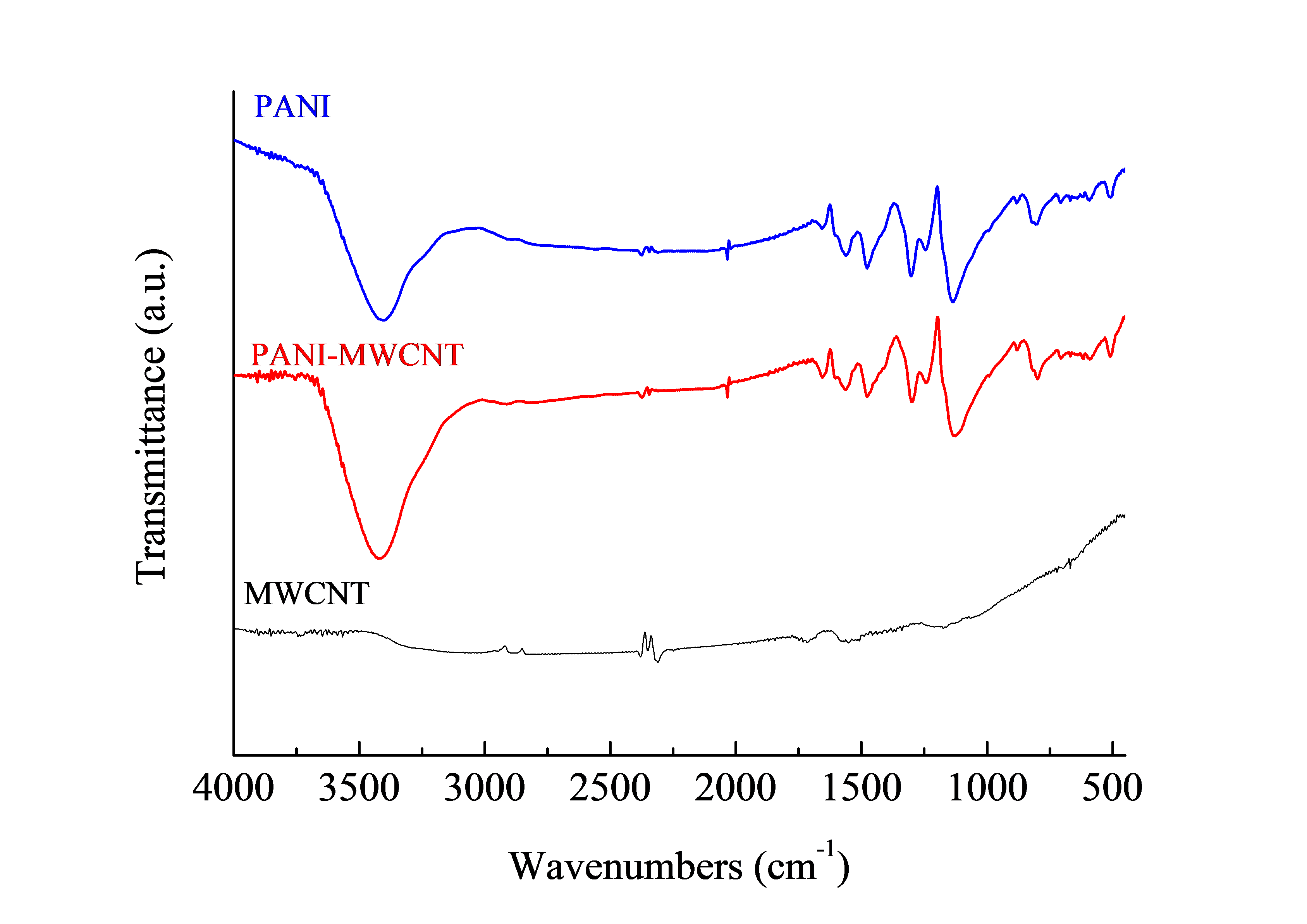
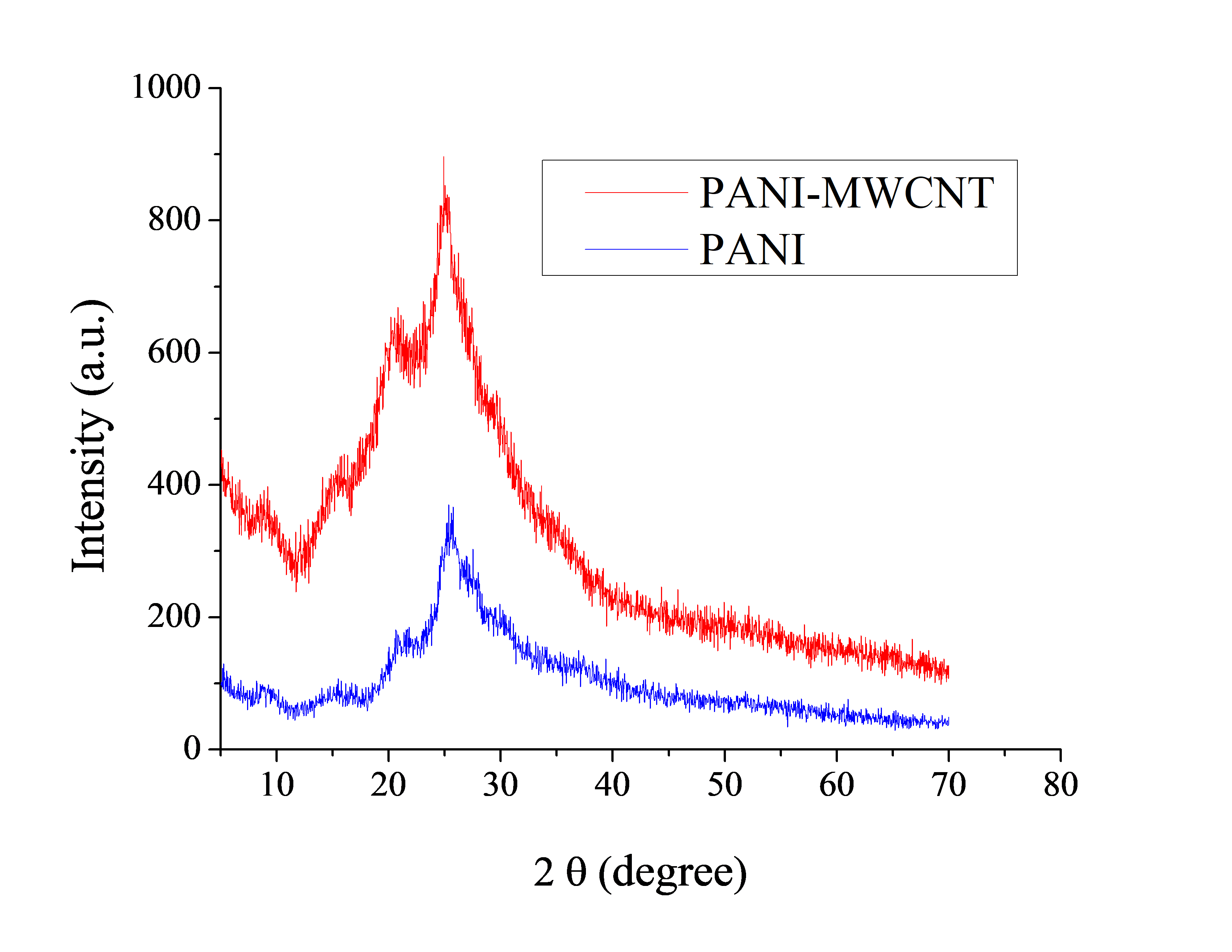
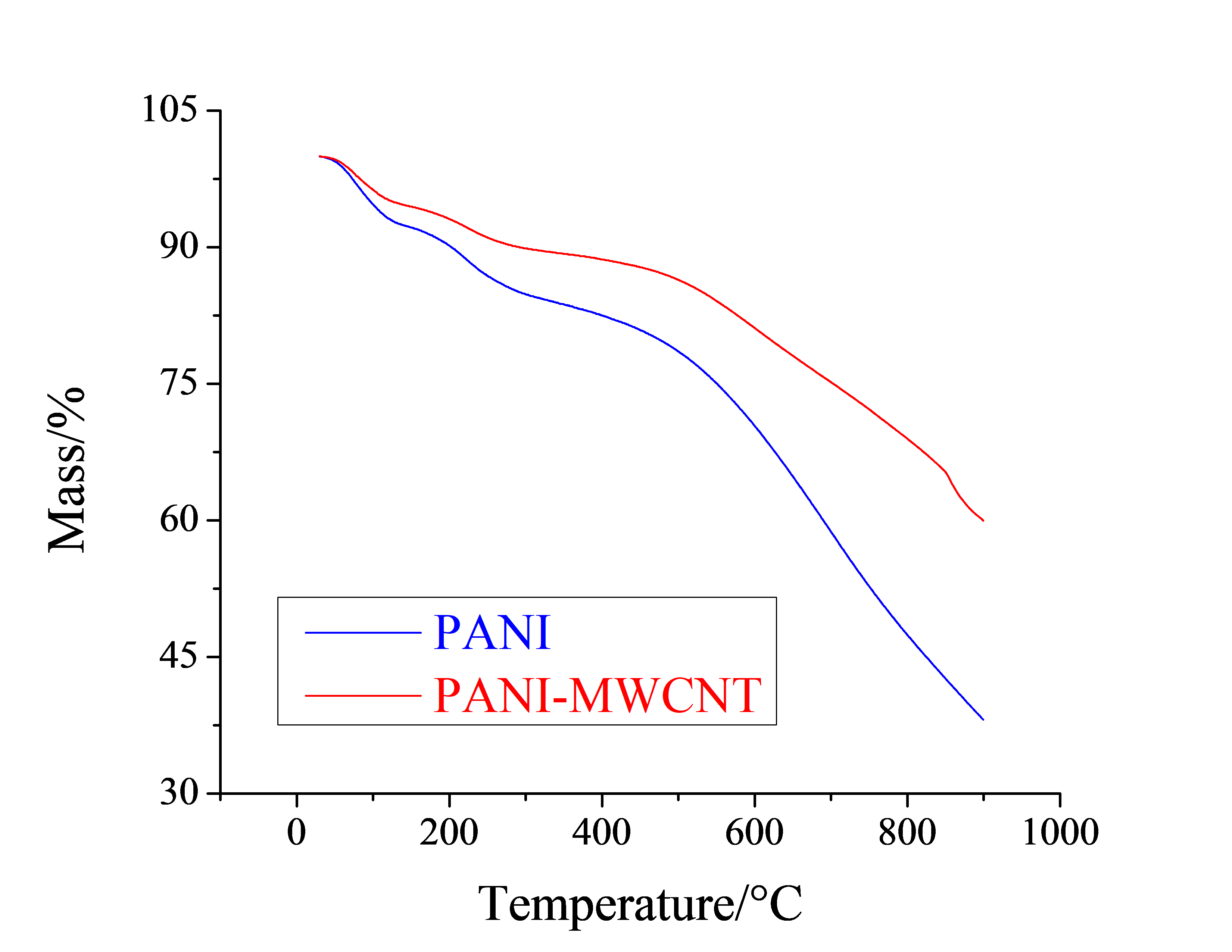

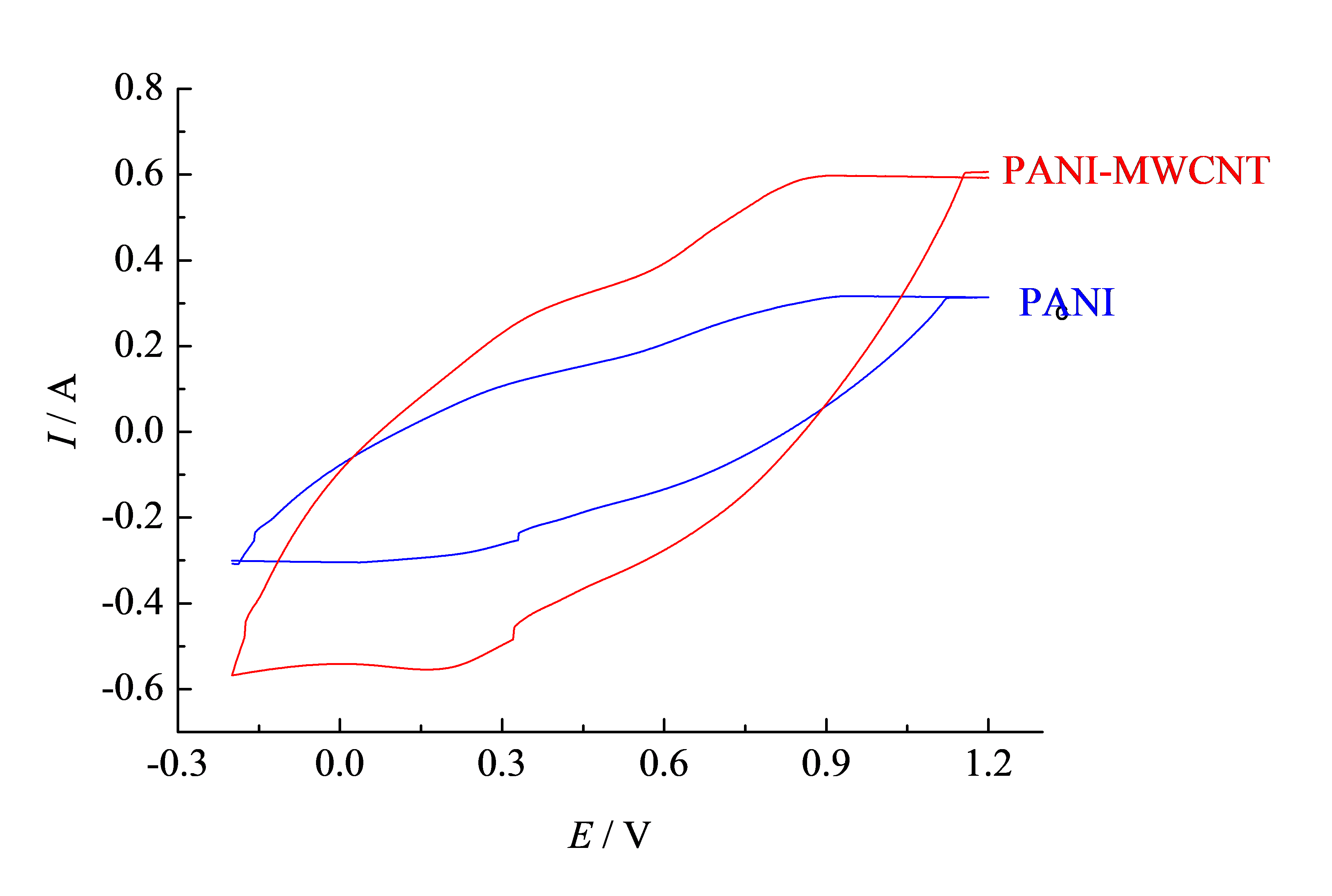
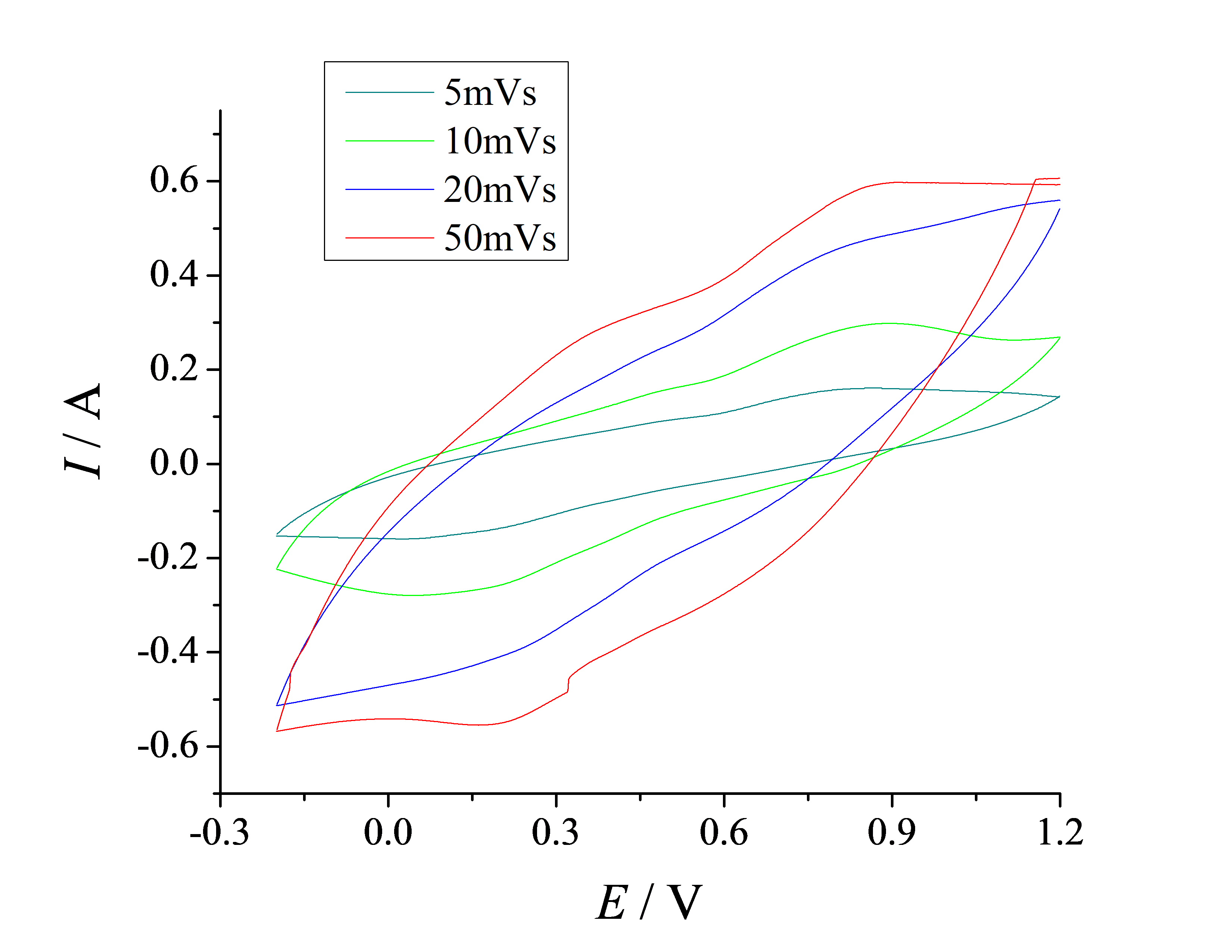
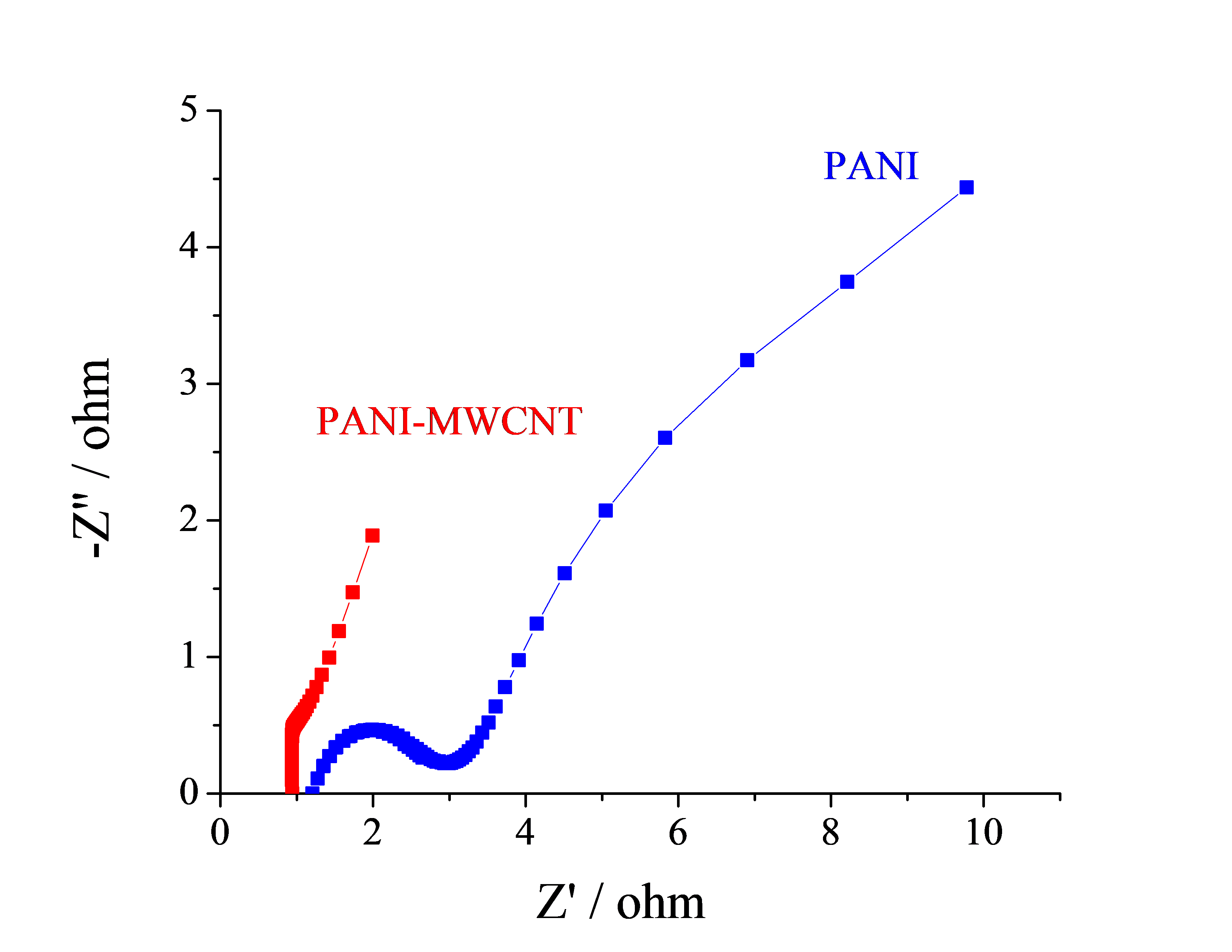
您可能感兴趣的文章
- BN嵌入型四苯并五苯:一种工具高稳定性的并五苯衍生物外文翻译资料
- MoS2和石墨烯作为助催化剂在增强的可见光光催化H2生产活性的多臂CdS纳米棒的作用外文翻译资料
- 通过在BiVO4的不同晶面上进行双助剂的合理组装制备高效率的光催化剂外文翻译资料
- 非编码RNA的固相合成研究外文翻译资料
- 氢化驱动的导电Na2Ti3O7纳米阵列作为钠离子电池阳极外文翻译资料
- 高能量及功率密度的可充电锌-二氧化锰电池外文翻译资料
- 利用导电聚合物纳米线阵列来增强电化学性能外文翻译资料
- 自支撑Na2Ti3O7纳米阵列/石墨烯泡沫和石墨烯泡沫准固态钠离子电容器电极外文翻译资料
- 基于碳纳米管金纳米粒子辣根过氧化物酶构建的过氧化氢生物传感器毕业论文
- 新型联二吡啶Pt(II)炔配合物的设计、合成及光物理性质研究毕业论文




